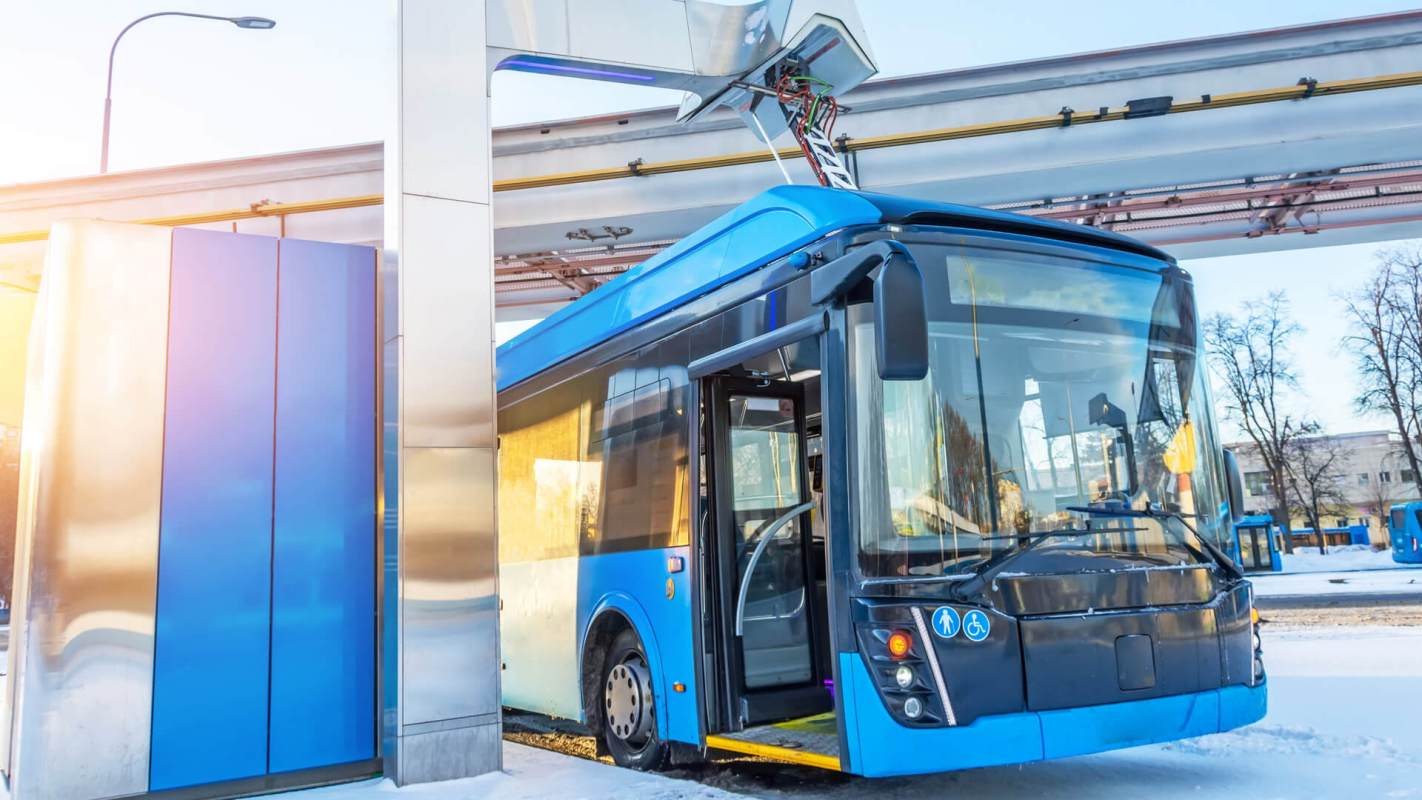Standard diesel-sucking buses are actually some of the most eco-friendly ways to travel when compared to planes and cars. But to slow the Earth's overheating and further reduce toxic pollution, we gotta go electric. Now is a great time for electric buses due to improving technology, federal incentives, and ambitious transportation goals from some of the biggest states in the United States.
Estimated savings
To adopt these cleaner alternatives, though, states and local municipalities must be prepared for higher initial costs. An e-bus may be 50% more expensive than a standard diesel option, and that's not including the cost of charging stations. Once over that initial speed bump, however, it's a smooth ride to savings.
A study in Austin, Texas, found that electric buses could save between $73,000 and $173,000 per unit over their lifetimes, since they make up for their higher sticker prices with massive savings in fuel and maintenance costs down the line.
The ecological savings electric buses offer are significant as well. In California, electric buses caused 70% fewer toxic emissions than their dirty-energy-burning counterparts. Every 1,000 e-buses saves an estimated 500 barrels of diesel a day.
So there is a strong case to be made for replacing transit diesel buses with electric ones at the end of their lives — but what about school buses?
It turns out that this market is a whole different beast. According to Macro Polo, electric school buses are often three times the price of diesel ones. Since school buses typically use less fuel than transit models, adopters of the electric upgrades stand to save less on fuel as well. There's still great reasons to push for electric school buses, but the road's not quite as easy.
A breath of fresh air
Electric school buses can be a breath of fresh air for school districts and students.
When Virginia dedicated $20 million toward electric school bus initiatives in 2019, former Governor Ralph Northam explained that replacing just 75 diesel buses with electric models would prevent 670,000 pounds of nitrogen oxide and 36 million pounds of toxic tailpipe emissions from ever entering the air over the lifespan of the buses. That's like taking 3,500 cars off the road or saving 1.6 million gallons of fuel, WVEC reported.
Healthy air means healthy lungs. When diesel is burned it releases all kinds of toxins that can hurt vulnerable kids. Forbes links to studies showing how all that toxic exhaust impedes brain development and how those nitrogen oxides can trigger asthma attacks. These hazards disproportionately hurt children of color and make it harder to succeed in class.
Columbia University found that swapping one transit diesel bus for an electric reduces human health costs by $150,000 per year. The American Lung Association found that switching all New York's school buses to electric ones would generate $68.2 billion in public health benefits and prevent over 6,000 deaths.
The technology for electric buses is always getting better
Battery improvements, innovation from competition and increased funding, and savings as manufacturing ramps up are all working to make electric school buses more affordable and attractive.
Experts think that the lifetime cost of electric school buses will match diesel buses by the end of this decade. Lower fuel and maintenance costs mean that the electric fleet can save between $4,000 and $11,000 annually per bus, as reported by CleanTechnica.
Forbes puts it another way: " ... school districts are spending just 14 cents per mile on their e-buses compared to 49 cents per mile for diesel buses."
So far, places like California, Boston, and New York are working toward electrifying their fleets with ambitious speed. Colleges like Virginia Tech are introducing electric buses in large capacities, and many school districts are taking important steps toward cleaner air for students.
The Infrastructure and Investment Jobs Act of 2021 has set aside 5 billion dollars toward electric buses and clean transit. Recently, the Inflation Reduction Act added more funding to the mix.
World Resources Institute details some great ways to learn about funding pathways if you'd like to advocate for e-buses in your district.
Follow The Cool Down on Instagram and TikTok.








